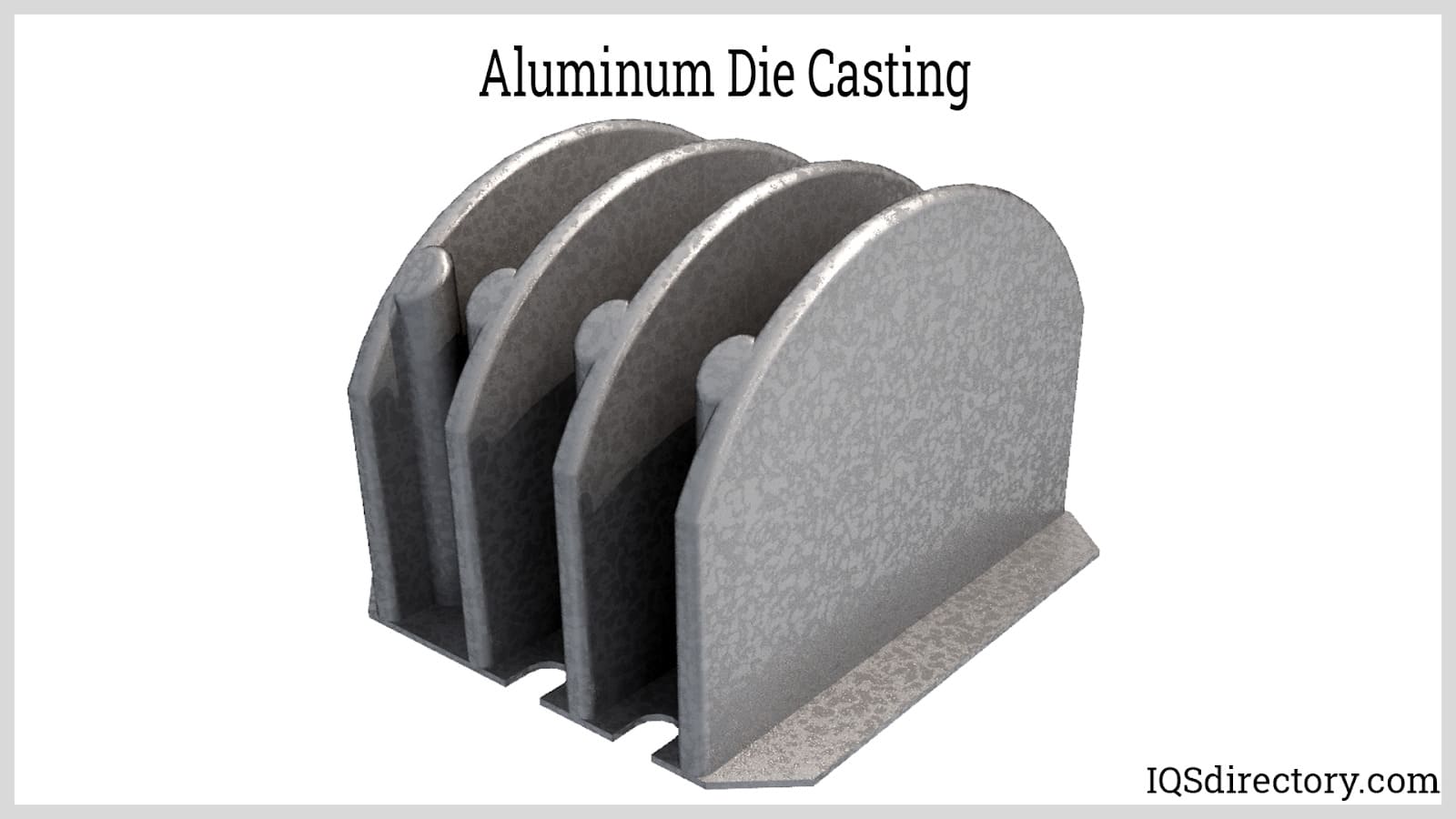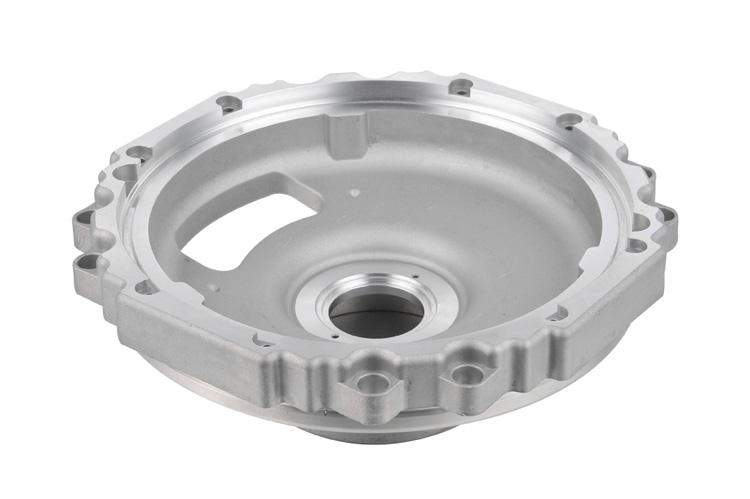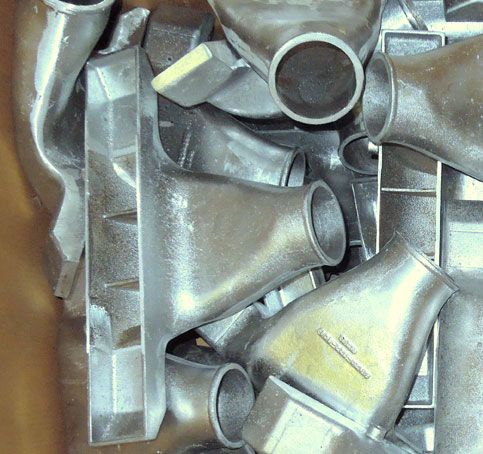Why Metal Castings continue to be vital in modern production
Checking Out the Versatile Utilizes and Applications of Light Weight Aluminum Castings in Modern Industries
Aluminum castings have become important to different contemporary sectors as a result of their distinct residential properties. They offer substantial advantages in weight decrease, thermal conductivity, and deterioration resistance. From automotive advancements to applications in customer products and building, their flexibility is impressive. Yet, real extent of their influence expands beyond prompt benefits, hinting at broader ramifications for sustainability and effectiveness. What exists ahead for light weight aluminum spreadings in an ever-evolving industrial landscape?
Automotive Industry Innovations
The vehicle industry has increasingly welcomed aluminum spreadings to enhance lorry efficiency and performance. By making use of light weight aluminum, manufacturers can generate lighter elements, which add to improved fuel economic situation and minimized exhausts. Secret applications consist of engine blocks, transmission instances, and structural components, where the product's strength-to-weight proportion provides toughness without adding excess weight.
Light weight aluminum castings likewise offer premium thermal conductivity, which aids in better warm dissipation, therefore boosting engine efficiency. Furthermore, improvements in casting technologies, such as die spreading and sand casting, allow the manufacturing of complex geometries, permitting for cutting-edge styles that maximize area and capability.
The recyclability of aluminum straightens with sustainability objectives in the auto market, advertising eco friendly methods. As the sector remains to introduce, using aluminum spreadings is likely to broaden, driving additional advancements in automobile style and efficiency.
Aerospace Applications and Advancements
While the aerospace industry continues to focus on weight decrease and fuel efficiency, light weight aluminum castings have actually become a vital product option for different applications. Their light-weight nature, combined with high strength-to-weight proportions, enables for significant improvements in airplane performance and effectiveness. Aluminum spreadings are commonly utilized in architectural components, such as body frames and wing parts, where reducing weight is vital.
Current developments in aluminum spreading modern technologies, including boosted alloy formulations and accuracy casting methods, have even more enhanced the product's efficiency capacities. These innovations allow the manufacturing of complicated geometries and intricate layouts while maintaining structural honesty. Additionally, light weight aluminum's excellent rust resistance assurances long life and reliability in severe aerospace environments.
As the aerospace industry increasingly welcomes sustainability, aluminum castings use a recyclable service that straightens with green practices, making them a pivotal aspect in the development of next-generation airplane.
Customer Goods and Everyday Products
As customers progressively look for light-weight yet resilient materials for everyday items, light weight aluminum castings have gotten popularity in various customer products. The one-of-a-kind residential properties of light weight aluminum, including its resistance to rust and excellent thermal conductivity, make it an optimal selection for products like cooking equipment, household devices, and exterior equipment. Aluminum cast frying pans and pots offer even warm circulation, improving cooking performance. Additionally, making use of light weight aluminum in products such as bicycle structures and baggage assures an equilibrium between stamina and transportability. Makers value light weight aluminum castings for their adaptability, as they can be quickly formed right into complex shapes while maintaining structural honesty. Furthermore, the capability to reuse light weight aluminum without weakening its buildings aligns with growing customer choices for sustainable items. On the whole, light weight aluminum castings are indispensable to the production of long lasting, practical, and aesthetically pleasing durable goods, satisfying the needs of contemporary lifestyles.
Building and Architectural Uses
Light weight aluminum castings have actually become a vital component in building and building style, particularly because of their stamina and lightweight nature. These properties make aluminum a perfect selection for various applications, including architectural components, exteriors, and attractive functions - Metal Castings. Building contractors and designers progressively utilize light weight aluminum castings for window frames, doors, and roof covering systems, boosting both capability and aesthetic appeals. The material's resistance to corrosion even more extends its life expectancy, reducing upkeep prices and ensuring resilience in diverse ecological problems
Aluminum can be quickly molded right into detailed layouts, permitting for innovative architectural expressions. Its convenience facilitates the creation of customized pieces that fulfill certain design needs, from ornate barriers to intricate assistances. As sustainability comes to be a concern, aluminum's recyclability adds to its charm in environment-friendly construction practices. Overall, light weight aluminum castings are changing the building sector by giving lightweight, resilient, and aesthetically enticing services.
Digital and electric Components
Aluminum spreadings play a vital function in the manufacturing of light-weight electric enclosures, which improve mobility and effectiveness in different applications. On top of that, their superb thermal conductivity makes them perfect for warmth sinks, ensuring peak performance and long life of electronic components. Aluminum's conductive residential or commercial properties add to its use in various electrical conductors, highlighting its significance in contemporary innovation.
Light-weight Electric Units
Lightweight electric units play a necessary role in safeguarding sensitive digital components from environmental aspects and physical damages. Constructed from aluminum spreadings, these enclosures are valued for their strength-to-weight proportion, making them perfect for different applications across sectors. Their light-weight nature aids in minimizing overall system weight, which is vital in mobile and portable electronics. Aluminum's deterioration resistance boosts longevity, expanding the lifespan of the enclosed parts. The ability to mold aluminum right into complicated forms enables personalized styles, satisfying specific requirements while guaranteeing reliable heat dissipation. In addition, these rooms can be conveniently integrated into existing systems, giving adaptability and flexibility in modern-day technological environments. Overall, lightweight light weight aluminum enclosures significantly add to the effectiveness of electronic devices.
Warm Sinks and Conductors
While lots of products are utilized in digital components, aluminum spreadings stick out for their efficiency in warmth monitoring as warm sinks and conductors. Their outstanding thermal conductivity enables reliable warmth dissipation, which is important in stopping the overheating of digital tools. Aluminum's light-weight nature even more enhances its suitability for applications where weight is a considerable aspect, such as in aerospace and auto markets. In addition, light weight aluminum spreadings can be easily molded into intricate shapes, giving style versatility for maximizing thermal performance. The rust resistance of aluminum likewise contributes to the durability and dependability of these components in different settings. As modern technology advances and tools end up being more small, the need for reliable warmth monitoring remedies, like aluminum spreadings, proceeds to expand.
Marine Market Utilization
The marine industry significantly counts on aluminum spreadings for their exceptional toughness and corrosion resistance. These properties make light weight aluminum a suitable option for numerous applications, including boat hulls, engine Going Here elements, and aquatic equipment. The lightweight nature of light weight aluminum spreadings allows improved gas effectiveness and less complicated ability to move in watercraft, more tips here which is vital for both entertainment and industrial vessels.

Light weight aluminum spreadings also provide considerable price advantages because of their lengthy lifespan and low upkeep requirements, minimizing the general operational costs for marine operators. Additionally, the versatility of light weight aluminum permits detailed layouts that can meet particular performance needs.
Suppliers in the aquatic field use advanced spreading techniques to create complicated shapes, guaranteeing that elements meet rigorous safety and security and performance criteria. As the need for high-performance aquatic vessels grows, aluminum spreadings are positioned as a crucial product in improving the functionality and longevity of aquatic equipment.
Sustainability and Recycling in Aluminum Casting

Light Weight Aluminum Recycling Refine
Recycling light weight aluminum plays an important function in reducing environmental effect and saving sources within the casting industry. The aluminum recycling procedure starts with the collection of scrap light weight aluminum, which can consist of old elements, manufacturing waste, and post-consumer items. This scrap is after that sorted, cleaned up, and shredded right into small pieces to help with melting.
When prepared, the aluminum scrap is melted in a heating system at lower temperature levels than key aluminum production, considerably reducing power consumption. The liquified aluminum is then cast into ingots or other shapes for reuse in numerous applications - Metal Castings. This closed-loop system allows for the reliable recuperation of aluminum, preserving its residential properties while lowering the demand for virgin products. The recycling procedure is an essential component of sustainable methods in aluminum spreading.
Ecological Benefits
While light weight aluminum casting plays an essential function in numerous markets, its environmental benefits are especially exceptional pertaining to sustainability and source conservation. The lightweight nature of light weight aluminum adds to energy efficiency in transport, reducing gas consumption and exhausts. Furthermore, light weight aluminum casting facilitates using recycled products, significantly decreasing the power needed for manufacturing contrasted to primary light weight aluminum. This recycling process minimizes waste and reduces the environmental influence related to mining and refining raw materials. Additionally, aluminum is 100% recyclable without deterioration of its properties, promoting a sustainable lifecycle. By selecting aluminum spreading, markets can significantly reduce their carbon footprint while advertising resource efficiency, making it a vital choice in the pursuit of eco-friendly production practices.
Closed-Loop Solutions

Regularly Asked Inquiries
What Are the Trick Advantages of Light Weight Aluminum Castings Over Other Products?
Light weight aluminum castings provide light-weight buildings, excellent rust resistance, and high strength-to-weight proportions. They can be conveniently formed into complicated forms, give great thermal and electrical conductivity, and are economical, making them more effective over many alternative products.
How Is the Aluminum Casting Process Eco-friendly?
The light weight aluminum spreading procedure is eco-friendly because of its recyclability, low power consumption, and reduced waste manufacturing. Its ability to utilize recycled materials reduces the carbon impact, promoting sustainability within making practices.
What Prevail Challenges in Light Weight Aluminum Spreading Production?
Common difficulties in light weight aluminum casting production include maintaining dimensional precision, handling thermal tightening, preventing issues like porosity and incorporations, guaranteeing appropriate mold design, and optimizing manufacturing efficiency while lessening product waste and environmental effect.
Just How Do Light Weight Aluminum Castings Compare in Cost With Various Other Manufacturing Approaches?
Aluminum castings normally use affordable prices compared to various other making methods, especially for tool to high-volume production. Their lower preliminary tooling expenditures and effective product use can result in desirable economics gradually.
What Future Patterns Are Expected in Aluminum Casting Modern Technology?
Future fads in light weight aluminum casting innovation are prepared for to consist of advancements in automation, enhanced alloy compositions, enhanced reusing techniques, and the integration of 3D printing, all intended at enhancing effectiveness, decreasing expenses, and decreasing environmental impact.
Current developments in aluminum spreading modern technologies, consisting of enhanced alloy formulas and precision casting methods, have further enhanced the material's performance capacities. Light weight aluminum spreadings have become a crucial element in construction and architectural layout, particularly due to their strength and lightweight nature. The light weight aluminum reusing procedure begins with the collection of scrap aluminum, which can consist of old components, making waste, and post-consumer products. As soon as prepared, the light weight aluminum scrap is thawed in a heater at reduced temperatures than main light weight aluminum manufacturing, substantially decreasing power usage. Additionally, aluminum casting facilitates the usage of recycled products, considerably lowering the energy needed for manufacturing contrasted to primary aluminum.